Exploring Cusco’s 8 most important religious temples is a mystical journey where every stone tells an ancestral story, and each altar reflects the fusion between Inca tradition and European influence. This experience captivates curious travelers, awakens interest in Peru’s sacred past, and motivates the discovery of the most emblematic places of Andean spirituality.
1. Cusco Cathedral: The Sacred Soul of the Historic Center
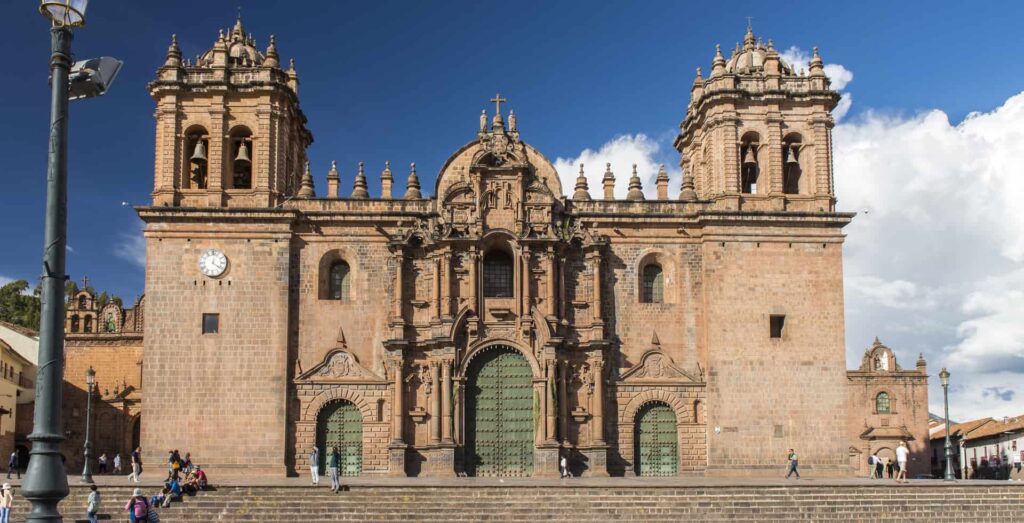
The majestic Cusco Cathedral, built over the ancient palace of Inca Wiracocha, is one of the most representative temples of colonial heritage in South America. Its construction, which lasted over a century (1560–1664), showcases an exquisite fusion of Gothic, Renaissance, and Baroque styles, making it a monumental jewel of religious architecture.
This imposing building is not only a symbol of ecclesiastical power but also a refuge of sacred art: inside, it houses paintings from the Cusco School, gilded wood carvings, and altarpieces decorated with precious metals. Additionally, it safeguards the Lord of the Earthquakes, an image venerated by the faithful since the 1650 earthquake. Considered a Cultural Heritage of the Nation, the cathedral is a must-visit for anyone wishing to understand the faith and history that shaped colonial Cusco.
2. Church of the Society of Jesus: Jesuit Splendor in the Andes
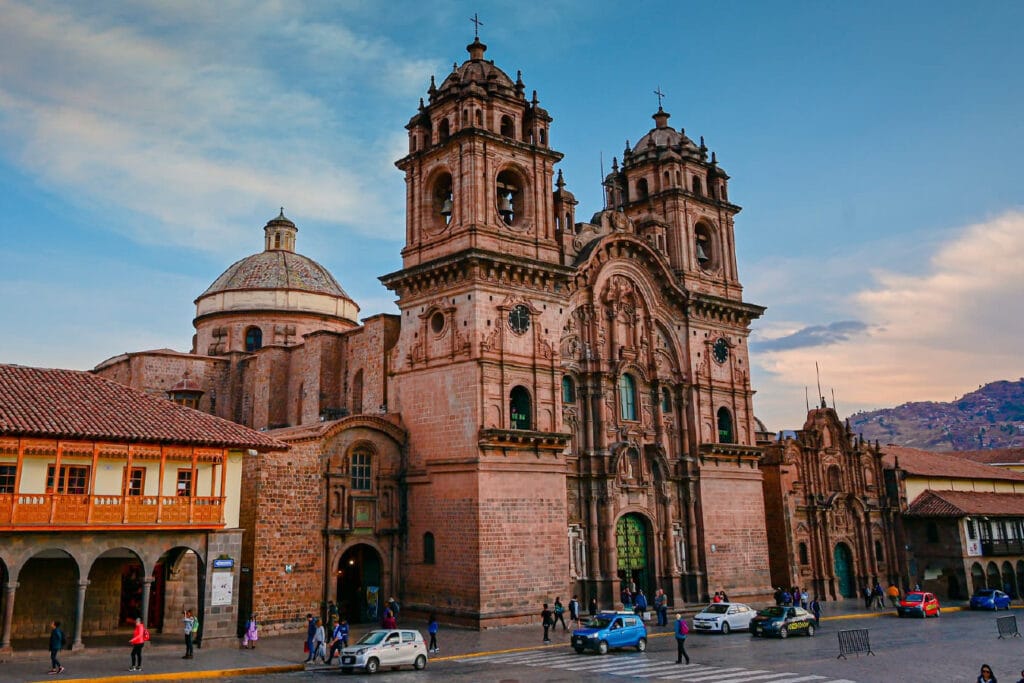
On one side of the Plaza de Armas stands the Church of the Society of Jesus, a magnificent example of Andean Baroque. Initiated in 1571, the church was devastated by the 1650 earthquake and rebuilt shortly thereafter, maintaining its lavish architecture and Jesuit symbolism.
What impresses visitors most is its carved stone façade and its main altar completely covered in gold leaf. Inside, there are important works of art and the crypt of some noble families of Cusco. This church reflects the power and influence that the Society of Jesus had in the Viceroyalty of Peru, especially in the educational, spiritual, and cultural realms. Visiting it transports travelers to the period of colonial splendor when evangelization and art walked hand in hand.
3. Church of La Merced: Guardians of Faith and Viceregal Art
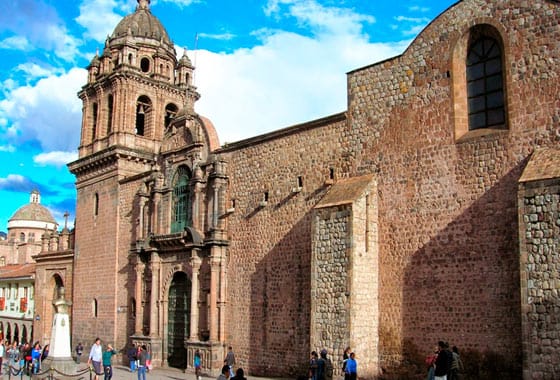
The Church and Convent of La Merced was one of the first religious temples built in Cusco, in 1535, by the Mercedarian order. Since then, it has been a center of devotion and contemplation, characterized by its harmonious Baroque architecture with Mannerist influences.
One of its greatest treasures is the famous gold monstrance over 1.2 meters tall, adorned with diamonds, emeralds, and pearls, considered one of the most valuable in the Christian world. Additionally, its spacious cloisters and Baroque altarpieces make the place an oasis of serenity and heritage. In its crypts rest the remains of historical figures such as Diego de Almagro and Gonzalo Pizarro. La Merced is more than a temple; it is a time capsule that connects visitors with the soul of viceregal Cusco.
4. Temple of San Blas: Devotion Carved in Wood
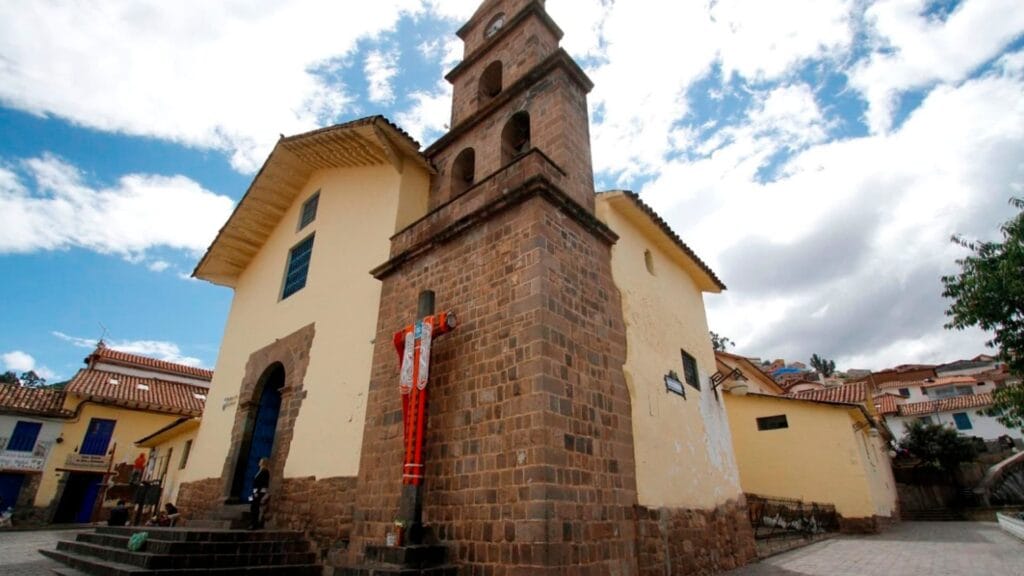
Hidden in the bohemian neighborhood of San Blas, this colonial temple stands as one of the oldest in the city. What makes it exceptional is its famous carved wooden pulpit, considered one of the most impressive works of Baroque religious wood art in all of Latin America. It is said to have been sculpted by an anonymous indigenous artist, adding a touch of mystery and symbolic value.
San Blas is also a reflection of cultural integration: indigenous traditions coexist with Christian expressions in the same space. Its location, in one of the most artistic and traditional neighborhoods of Cusco, makes this temple not only a spiritual site but also a point of inspiration for locals and travelers.
5. Monastery of Santa Catalina: Spirituality Within Colonial Walls
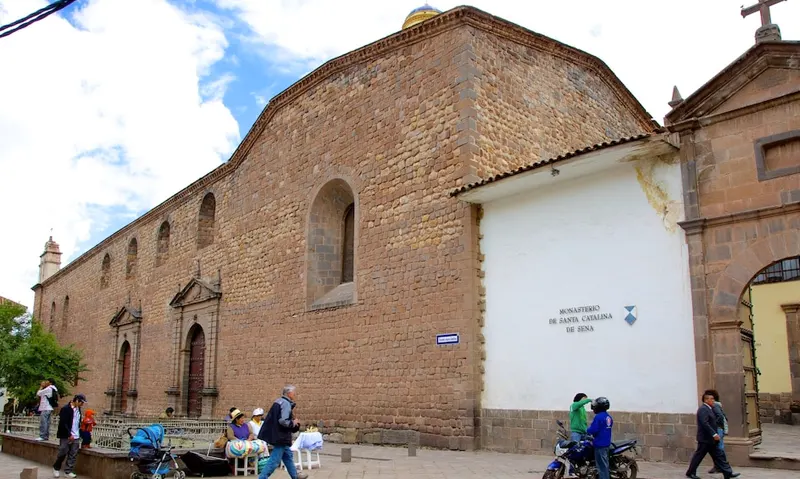
This site, built in 1601 over what was once the Acllahuasi — the residence of the Virgins of the Sun — is one of the clearest examples of religious and cultural syncretism in Peru. The Monastery of Santa Catalina not only housed nuns since colonial times but also preserved remnants of Inca architecture.
It currently functions as a museum, and during the tour, visitors can admire sacred art, antique furniture, and monastic spaces that allow them to imagine the daily life of the nuns. Its value goes beyond religion: it’s a space that connects the pre-Hispanic past with Christianity, culture with contemplation, silence with wisdom.
6. Temple of Coricancha: Solar Splendor in Stone and Faith
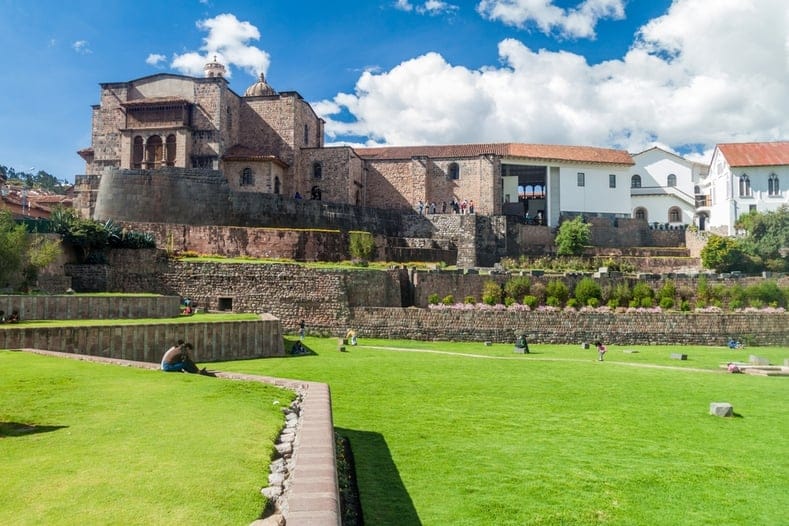
Coricancha, meaning “golden enclosure,” was the most sacred Inca temple, dedicated to Inti, the Sun god. According to chronicles, its walls were lined with pure gold sheets that gleamed in the sunlight. After the conquest, the Spanish built the Convent of Santo Domingo on its foundations as a clear display of spiritual dominance.
This temple represents Cusco’s duality: the Andean world that worshiped nature and the cosmos, and the Catholic tradition that was imposed forcefully. Today, visiting Coricancha is witnessing how two opposing worldviews overlap in the same physical and spiritual space.
7. Church of Andahuaylillas: Celestial Art in the Southern Valley

About 40 km southeast of Cusco lies the Church of San Pedro Apóstol de Andahuaylillas, a true gem of Andean Baroque. Its interior, decorated with frescoes, murals, and gold-painted ceilings, has earned it the nickname “The Sistine Chapel of the Americas.”
Built in the late 16th century by the Jesuit order, the church was part of a missionary effort to convert the indigenous peoples. Today, it is part of the Andean Baroque Route and is one of the main attractions in the Southern Valley — perfect for those who wish to discover a unique fusion of faith, art, and tradition in a rural setting.
8. Machu Picchu: The Eternal Temple of the Andes
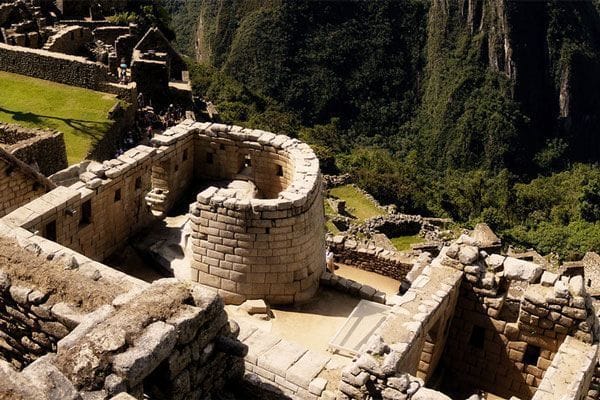
Though it’s more famous for its engineering and landscape, Machu Picchu also holds deep religious significance. This Incan sanctuary includes structures like the Temple of the Sun, the Intihuatana (solar clock), and the Temple of the Three Windows — all designed with astronomical precision that reflects the Incas’ connection to the stars and nature.
Archaeologists agree that Machu Picchu was, among other things, a ceremonial site and spiritual retreat. Walking its paths and observing its temples brings visitors closer to the magical-religious thinking of the Andean world, where Pachamama (Mother Earth) and Inti (Sun) were sacred entities. Machu Picchu is more than a city — it’s a temple open to the sky.
Why These Temples Are Must-Sees on Your Visit to Cusco
These temples represent more than architecture: they are portals to the soul of Cusco. Each tells a different story where Incan spirituality meets Catholic heritage, creating a unique expression of faith and art. Visiting them is not just about admiring beauty — it’s about experiencing a deep connection with the living history of Peru.
Reasons not to miss them:
- They are cultural heritage sites of immense historical value.
- They reveal the religious syncretism of Latin America.
- They offer unique cultural experiences found nowhere else in the world.
Tips for Visiting Religious Temples in Cusco
- Check updated schedules: Some temples close during private ceremonies or holidays.
- Wear modest clothing: Respect the codes of sacred spaces.
- Get the religious tourist ticket: This pass includes access to several churches and convents at a better price.
- Hire certified local guides: You’ll gain a more educational and enriching experience.
- Avoid peak hours: Early morning is ideal for a peaceful, crowd-free visit.